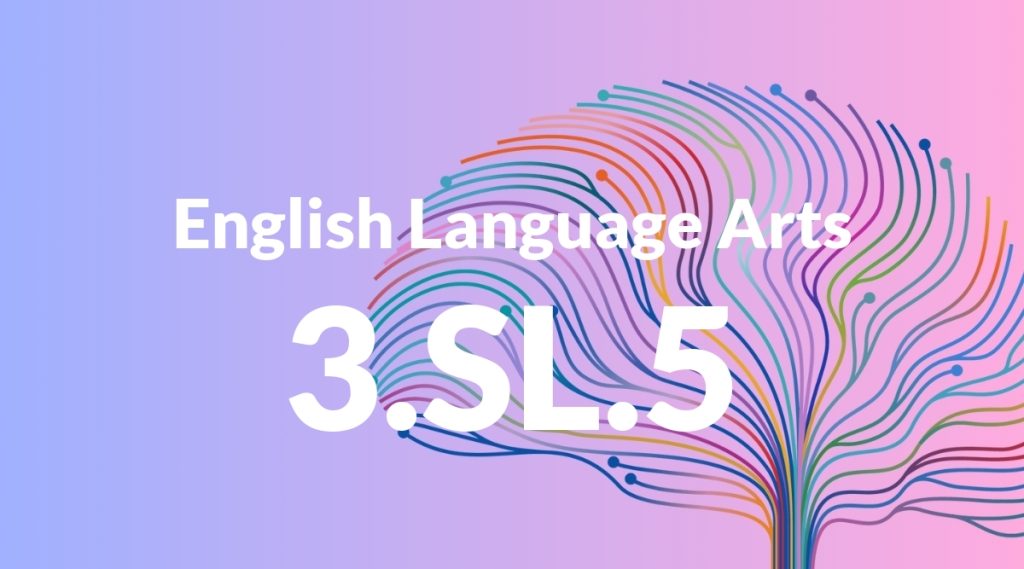Standard: 3.SL.5 – Create engaging audio recordings of stories or poems that demonstrate fluid reading at an understandable pace; add visual displays when appropriate to emphasize or enhance certain facts or details.
Grade level: Grade 3
Subject: English Language Arts
Domain: Speaking & Listening
Teacher Overview
This standard emphasizes the importance of fluid reading and the use of multimedia to enhance storytelling. It encourages students to create engaging audio recordings and use visual aids effectively. This skill is crucial for developing communication abilities and integrating technology into learning. Students should have a foundational understanding of fluent reading, basic storytelling elements, and some familiarity with audio recording tools.
After mastering this standard, students will be able to use multimedia tools to enhance their presentations and improve their overall communication skills.
Common Misconception 1
Some students might think that reading quickly is more impressive than reading clearly. This is incorrect because clarity and expression are key to effective communication.
Intervention 1
To address this, have students practice reading with a focus on expression and clarity. Use recording and playback to help them self-assess and improve.
Common Misconception 2
Another common misconception is that any visual display will enhance their presentation. This is incorrect because irrelevant visuals can distract rather than support the content.
Intervention 2
Show students examples of effective visual aids and discuss why they work. Have them practice selecting or creating visuals that directly relate to and enhance their audio recordings.
Prerequisite Knowledge
Students should be able to read fluently at grade level, understand the basic elements of a story or poem, and have some experience with using audio recording tools.
Subsequent Knowledge
Students will develop the ability to use multimedia to enhance communication, improve their public speaking skills, and learn to critically evaluate the effectiveness of different presentation methods.
Instructional Activities
- Practice reading stories or poems aloud with a focus on expression and clarity.
- Create audio recordings of readings and listen to them for self-assessment.
- Select or create visual aids to accompany an audio recording.
- Present an audio recording with visual aids to the class.
- Critique peer presentations to provide constructive feedback.




